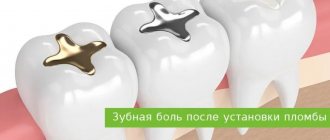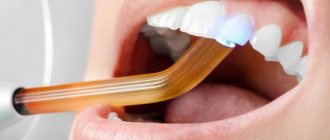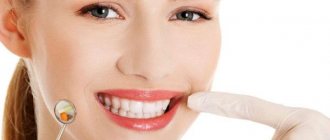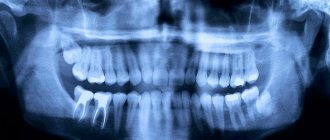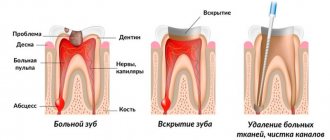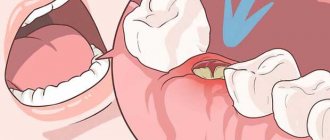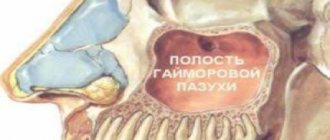Installing a filling is a standard procedure that every person faces sooner or later. Using special material, the doctor restores part of the dental tissue that was lost due to therapeutic or restorative measures. Most often, filling is used during the fight against caries and pulpitis. In the latter case, it is assumed that the channels are cleaned and then filled with a composite solution.
These measures are aimed at eliminating physical and pain factors. During the rehabilitation process, the patient may feel discomfort for some time.
Pain is observed in 80% of people, which is considered a normal reaction of the body to aggressive intervention. They take place within 3-14 days, depending on the complexity of the procedure and the physiological characteristics of the individual patient.
What to do if the pain does not subside when pressing hard on the tooth after filling? What could this be connected with, why does this happen?
These measures are aimed at eliminating physical and pain factors. During the rehabilitation process, the patient may feel discomfort for some time. Pain is observed in 80% of people, which is considered a normal reaction of the body to aggressive intervention. They take place within 3-14 days, depending on the complexity of the procedure and the physiological characteristics of the individual patient. What to do if the pain does not subside when pressing hard on the tooth after filling? What could this be connected with, why does this happen?
Symptoms of periodontitis
Let's start with the fact that in the initial stages the disease occurs without symptoms, and it can only be detected at a dentist's appointment; this will require an x-ray. Symptoms appear in the stage of acute periodontitis or as a result of exacerbation of the chronic form. Among the signs of the disease:
- sharp or aching pain;
- swelling of the gums in the affected area;
- feeling as if the tooth has become taller;
- temperature increase;
- sleep disturbance;
- tooth mobility;
- tissue redness;
- pain when touching a tooth or chewing food.
If at least two symptoms occur, contact your dentist.
Causes
Before you begin to eliminate the problem, it is necessary to determine the cause of the occurrence, depending on which the diseases are distinguished:
- Traumatic - occurs when there is a mechanical action on the jaw, such as a blow, bruise, or even getting hit by a bone when eating food. Also with regular small impacts, such as biting off threads.
- Medication - in case of non-compliance with the doctor’s visit schedule: sometimes a strong medicine is placed in the root canal, and the next appointment time is not just prescribed. Ignoring it leads to acute periodontitis.
- Infectious - the culprit is streptococcus, which accumulates in the affected tissues and provokes inflammation.
Among the ways of “infection” there are:
- intradental - or canal, that is, toxins and bacteria move through the root canal, infect the pulp and lead to death in the periodontal tissues;
- extradental - less common - inflammation spreads from surrounding tissues not directly related to the dentition - sinusitis, osteitis, etc.
Even less often, the transition occurs through blood and lymph.
Pulpitis and periodontitis are often confused, but:
- first - inflammation, which occurs due to the penetration of microbial organisms, affects the pulp - the inner part of the tooth, where the nerve endings and blood vessels are located; characteristic symptoms are acute throbbing pain, which sometimes spreads to the ear, jaw, head (causing migraine), and intensifies in the evening and with a sharp change in temperature;
- second, the inflammatory process affects the deep bone tissues surrounding the tooth and is a complication after pulpitis.
That is, the second is a consequence of the first.
Classification of periodontitis
The pathogenesis of the disease distinguishes several types:
- Apical periodontitis is considered a mild form, localized at the very apex of the root, with symptoms: acute pain, swelling, high body temperature and malaise. The causes are untreated pulpitis or carious disease, an error when installing a prosthesis, and even tartar. This type accounts for thirty percent of requests.
This disease is typical for an undistributed load on the teeth, which take on the role of removed molars or fillings, and also occurs due to therapeutic errors.
- Granulating periodontitis - characterized by pain when pressing, a feeling of swelling of the tooth, as well as skin fistulas - a purulent formation opens in the epithelium under the tooth, through which a variety of formed bacteria tries to find a way out. It can be effectively treated if you visit a dental clinic in a timely manner.
- Granulomatous (purulent) periodontitis is a dangerous pathology, which is characterized by the absence of pain symptoms that prompt the patient to see a dentist, since this is how the body protects itself from harmful microorganisms entering the blood. In this case, tooth and bone destruction occurs, and the tissues are filled with granulomas. Ultimately, this leads to tooth extraction without the possibility of restoration.
Additional information: A granuloma is a neoplasm formed from granulation tissue that isolates the affected, inflamed areas from the rest of the body. This is a kind of pouch filled with decaying cells. The capsule is usually attached to the root of the tooth and causes its loosening and destruction.
- Fibrous periodontitis - like the purulent form, cannot be diagnosed in the early stages, as it is almost asymptomatic. This is a constant inflammation of the periodontium (that is, the connective tissue that surrounds the tooth surface). In this case, the ligaments that hold the tooth in the gum are disrupted, which can lead to loss of teeth.
At the same time, this form of the disease can be caused by both independent factors, for example, problems with the heart and vascular system, and single causes:
- infection of periodontal tissues;
- deep advanced caries;
- mechanical impact and injury;
- low quality filling or prosthesis;
- chronic granulating or granulomatous periodontitis;
- penetration of foreign substances into the gums (pin, instrument defect).
Complications
Exacerbation of periodontitis, depending on the form of tooth damage, the stage of the disease and the location of the affected tooth, leads to complications:
- periostitis - inflammation of the periosteum or jaw;
- abscess - the development of an abscess due to the destruction of mucous, skin and fascial tissue, while neoplasms are characterized in soft tissues;
- phlegmon - abscess rupture;
- sinusitis - transition of the inflammatory process to the maxillary sinus;
- lymphadenitis - enlargement of the lymph nodes located closest to the affected area of the jaw;
- osteomyelitis - spread of infection to the bone, periosteum, soft tissue.
In addition to inflammatory processes, secondary adentia can occur - when, due to delamination of bone tissue, the tooth simply stops receiving nutrition and functioning and falls out.
Exacerbation of chronic periodontitis, as a rule, does not manifest itself symptomatically in the early stages of the disease, so it can only be detected during a preventive examination using x-ray diagnostics. Teeth that have previously undergone treatment for pulpitis or complex caries must undergo this type of examination.
Early diagnosis
An important role in making a diagnosis is an accurate, complete anamnesis - a survey (questionnaire) of the patient regarding complaints, the nature of pain, medical history and previous surgical interventions in the oral cavity.
Absolute indications for electroodontodiagnostics and x-ray examination:
- pain in a tooth that has previously been treated;
- state of intoxication of the body - high temperature, weakness, lack of appetite;
- the presence of asymmetry of the oval of the face, neck, change in skin color, enlargement of the lymph nodes closest to the jaw;
- external changes in the oral mucosa;
- the presence of a deep periodontal pocket;
- an extensive filling, under which the development of caries disease is observed (“a bad” filling can be easily identified by color, even if it is not photopolymer; as a rule, the affected materials have a gray color, under which darkening of caries is observed);
- tooth mobility.
Important! A diagnostic method based on the use of electric current allows one to determine the pain threshold of the dental pulp to determine its viability and the level of damage.
Light mechanical manipulations are also used to make a diagnosis - tapping in several positions (allows you to accurately determine the affected canal). It is also possible to use a cold test.
If at least one of the signs of periodontitis is detected, the diagnosis moves to the X-ray level. For accuracy, modern dentistry uses computed tomography, where each tooth is visible in great detail.
The exact type of disease can be determined directly during surgery, so contact a professional clinic where there will be specialists and tools to eliminate and treat this disease. .
Stages and forms of the disease
Periodontitis is divided according to the general principle into chronic and acute. Chronic cannot be completely cured. It is only possible to eliminate local inflammation and stop further exacerbation of the disease. Chronic periodontitis is asymptomatic and does not bother the carrier, but in case of exacerbation of the disease, symptoms begin to appear. In a calm state, a small fistula may appear on the gum from time to time, and slight discomfort may occur when chewing food or mechanical impact on the area of inflammation. If left untreated for a long time, the risk of tooth loss is high.
Treatment of acute periodontitis has an end result. But even after complete recovery, control over the oral cavity is necessary to avoid re-inflammation. In acute periodontitis, all of the listed symptoms are characteristic, only 2-3 of them may appear, and this is already a signal to visit the dentist. Purulent periodontitis is especially pronounced. In this case, the pain is acute, body temperature rises, and gumboil formation is possible.
Forms of periodontitis:
- Fibrous. In this case, periodontal tissue is replaced by fibrous tissue. It is often asymptomatic and can be detected by external signs: changes in enamel color, bad breath, pulp death.
- Granulating. It leaks quickly and destroys bone tissue. It is characterized by painful sensations when pressing on the gums or chewing food. A pulling or bursting pain may be observed without mechanical impact on the tooth.
- Granulomatous. This is a dangerous type of disease because it is asymptomatic, while destructive processes take place inside the periodontium, which are accompanied by the appearance of cysts and granulomas. If left untreated, the tooth may simply fall out. An infection locked in a granuloma or cyst can “explode” under the influence of the slightest irritant: provoke inflammation (for example, sepsis).
- Apical. The simplest form, easy to treat. It occurs as a result of untreated pulpitis and is localized in one place near the root.
Another treatment
Unfortunately, no one is immune from such situations, and therefore most modern clinics provide secondary services free of charge. If negative manifestations are associated with improper fitting of the filling, then the situation can be corrected by mechanical grinding of the surface in literally 10 minutes. Problems arising from the presence of voids, remnants of damaged tissue and instrument fragments require a whole range of measures. The doctor removes the old material, eliminates the cause, treats it with medication, and installs a new filling. In case of incorrect diagnosis of caries in the presence of pulpitis, the canal is cleaned according to the standard procedure.
Our clinic initially conducts a consultation and visual examination to identify both obvious and hidden causes of secondary pain. The use of modern equipment allows us to minimize the risks of incorrect diagnosis and incorrect treatment of a particular disease. X-rays are taken before and after the procedure, which is a guarantee of providing dental services at the highest level!
What to do when a filling interferes
Sometimes a filling can get in the way just because you’re not used to it, especially if there was deep caries, pulpitis or periodontitis in its place. That is, it is simply unusual for the patient to feel a filling instead of a cavity. But this feeling passes very quickly, and in just a few days the patient gets used to the healed tooth.
If the feeling of discomfort does not go away, you should consult a doctor. It is important that the treatment is carried out by a qualified dentist.
The first thing the specialist will do is take an impression of the jaws using a copy cloth. After strong clenching of the jaws, an imprint will remain on the surface of the napkin, from which the doctor will be able to determine the area that brings discomfort to the patient. If the area is small, the filling will simply be sanded and the imprinting procedure will be carried out again.
If the cause of discomfort lies in problems with the gums, a periodontist is involved in the treatment.
In some situations, removal of the filling material may be indicated. The tooth is prepared, medications are placed into the cavity, and an insulating gasket is installed. Afterwards, the tooth is closed with a temporary filling and the patient is sent home. If there is no discomfort when you visit the doctor again, a permanent filling is installed.
What to do if your teeth itch?
Of course, consult a doctor immediately. Don't try to diagnose it yourself or dismiss the problem as insignificant. Often itching is the first sign, followed by more serious ones: pain, inflammation, bleeding. Only a specialist can prevent negative consequences and relieve you of unpleasant sensations. Well, as a relief, before you get to the dental chair, you can suck on an ice cube or rinse your mouth with a soda solution.
How to understand what is bothering you with TMJ: 4 obvious signs
If you feel discomfort while talking, chewing, or yawning, look out for these signs:
- Are there any clicks or popping sounds during jaw operation (only 20% of people who notice this symptom complain of pain, however, this is a reason to suspect arthrosis of the temporomandibular joint and go for a diagnosis);
- Is there a feeling of jamming of the joint (if the fossa and the articular head are not in perfect contact, you have to open your mouth as much as possible, trying to find the right point);
- How severe is the pain (can occur when chewing, radiate to the temples, under the tongue, ears, neck, sternoclavicular region);
- Has your general health changed (headache and dizziness, insomnia, hearing impairment, depression and other uncharacteristic manifestations are possible).
With TMJ dysfunction, some patients develop snoring
How long does pain last after dental implant placement?
Let's consider the normal postoperative course of the condition.
1-5 day
. The pain may increase during the first few days, starting from the moment the anesthetic administered before implantation wears off. It can be aching, throbbing, and worsened by tilting the head. While this does not indicate a complication, this is the body’s natural response to intervention. As well as swelling of the tissues in the area of the implant.
5-10 day
. By the 5th day the pain subsides. The swelling subsides completely. The question remains for the patient: how much does the gum hurt after installing the implant, since it is still sensitive. By the 10th day, as a rule, everything goes away.
After 2-6 months
. There are times when everything goes fine, but after a few months or even a year a person complains that the tooth implant around it hurts. Possible reasons:
- loosening
of the plug, adaptation crown on the abutment. They rub the soft gum tissue. The situation is not critical. The dentist will adjust, carry out the necessary manipulations and you don’t have to worry about the safety of the implant;
implant rejection An unfavorable outcome of the entire implantation is unsuccessful osseointegration. The body did not accept the artificial tooth root. Fortunately, the rejection rate is close to 1%;- inflammatory
gum diseases. This is often due to poor hygiene and violation of the doctor’s postoperative recommendations; - injury
to the jaw nerve, then the jaw hurts after implantation.
If your gums, jaw, or ear hurt for more than 10 days after dental implantation, do not put off visiting the doctor who performed the operation. Early diagnosis and initiation of treatment will avoid complications. Calling after two weeks or more with such symptoms may delay treatment for a longer period.
What is the temporomandibular joint - TMJ
We use this joint while talking, chewing, yawning, laughing - very often. Around it are muscles and tendons that allow the jaw to move in different directions for different purposes.
TMJ problems occur for many reasons:
- violation of the dental system, for example, congenital anomalies of teeth, gums or bone tissue, malocclusions, injuries, poor-quality prosthetics;
- congenital anatomical abnormalities of this joint;
- increased or decreased tone of muscle fibers around the TMJ;
- active conversational load, for example, among actors, singers, speakers;
- central nervous system problems;
- disruptions in the functioning of the endocrine system;
- excessive tension of the jaw muscles, for example, due to the bad habit of biting nails.
What is the temporomandibular joint and why do problems arise with it? Detailed and clear - in the video:
Actors and singers with active oratorical articulation are at risk for TMJ arthrosis
Treatment methods for bruxism in adults
Treatment of the disease involves the complete elimination of the factors that provoked its occurrence. For this, high-quality diagnostics is necessary.
Since the main cause of teeth grinding at night is nervous tension, it is important to deal with this particular problem. Helpful medical advice can look different.
- Learn to relax muscle fibers. To do this, you can eat food that requires thorough chewing. The muscles will get tired and will be in a relaxed state the rest of the time.
- Organize your workday correctly, avoid stress, and avoid drinks that irritate your nervous system.
- Take a warm bath with herbal decoctions before bed, drink herbal teas.
- Exercise regularly to promote good sleep.
All of the above methods should be used along with medical intervention. If you neglect to go to the dentist or other medical institution, following simple rules will not help in getting rid of the disease.
Psychotherapy
For psychological causes of bruxism in adults at night (during sleep), treatment should be carried out by a psychologist. A visit to a specialist is mandatory if the patient is plagued by depression, neuroses, stress, suicidal thoughts and other dangerous symptoms. During the therapy period, the doctor will provide support and help establish the etiology of mental disorders, including noting hereditary or acquired factors.
During therapeutic sessions, a person with mental disorders will learn to cope with stress, emotions, and problems that have arisen. A competent psychotherapist is able to teach a patient to get rid of fears, grievances accumulated in childhood and adolescence, to let go of anger and other experiences. Psychotherapy will have a beneficial effect not only on oral health, because the patient will stop grinding his teeth and straining his jaw, but also on his overall well-being.
Drugs for the treatment of bruxism
The main goal of drug therapy for this disease is to reduce spasmodic muscle tone. The main groups of medications prescribed by dentists individually can be used either separately or in combination.
- Vitamin and mineral complexes. Vitamin B should predominate in them, as well as calcium and magnesium.
- Sedatives and mild solutions (valerian, motherwort, Novo-Passit).
- Muscle relaxants (Detilin, Flexen).
It is worth mentioning botulinum toxin injections separately. When the substance is injected into the trigger point of a toned muscle, the analgesic effect quickly appears. After a few days, complete muscle relaxation occurs (muscle relaxation). The procedure helps to forget about the problem for six months to a year. In any case, only a doctor can prescribe such interventions.
Orthodontics
Occlusal guards not only eliminate grinding, but also protect teeth. These are safe structures made of soft polymers based on an impression of the patient’s dentition. Wearing the accessory does not bring any discomfort.
Kinds:
- Daytime. Indicated for serious stages of pathology, worn throughout the day. They are invisible to others, do not distort speech, and do not interfere with eating.
- Nighttime. They act similarly to those discussed above, but are worn only at night while sleeping.
- Resonating. Doctors prescribe them if the disease is very advanced. They help move the articular head and get rid of spasms.
- On one or both jaws. This depends on the extent of the damage and the need to protect a small or large area.
